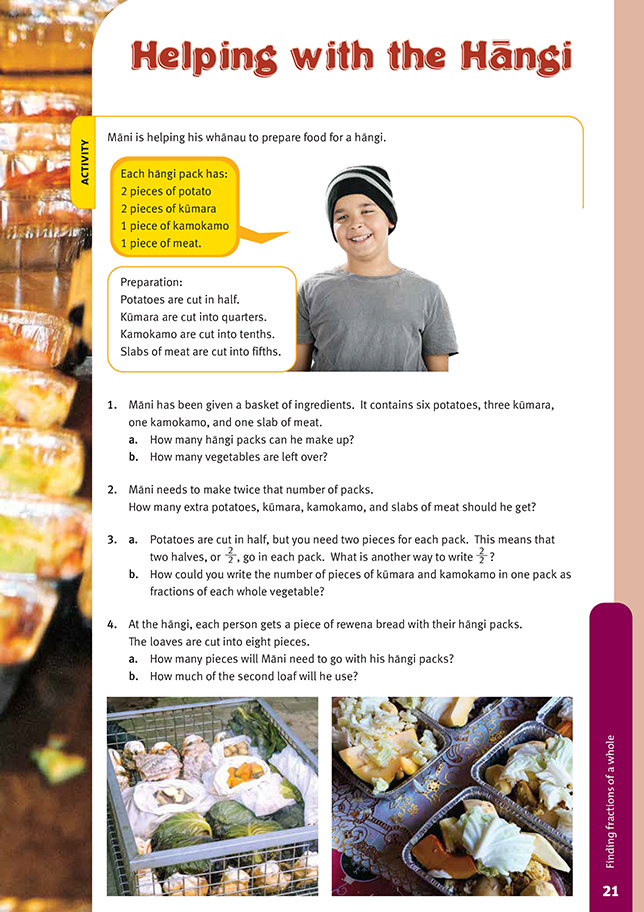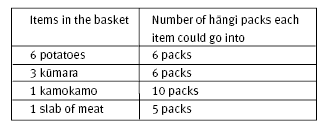This is a level 3 number link activity from the Figure It Out series. It relates to Stage 6 of the Number Framework.
A PDF of the student activity is included.
Click on the image to enlarge it. Click again to close. Download PDF (199 KB)
solve problems involving finding fractions of a number
FIO, Link, Number, Book One, Helping with Hāngi, page 21
This activity challenges students to see fractions of different wholes (the food items) and to recombine them into a different whole (the hāngi pack).
If the students are having difficulty understanding what is happening in this context, have them make a chart that shows the relationships between the whole food item and the number of pieces:
In question 1, the students could explore the baskets of ingredients in relation to hàngi packs on another chart:
From this, they can see that this basket of ingredients can only make five complete packs, but there will be some pieces of vegetables left over to use in other packs. The students will need to use this information to answer question 1b.
Question 4 refers to the hàngi packs that Māni prepares in question 2. The question presents an opportunity to introduce vulgar fractions (fractions expressed by numerators and denominators rather than decimally)
and mixed fractions because there will be 10 pieces of bread, and when we compare this to the number of loaves used, we can say that Māni needs 10/8 loaves, which is one whole and 2/8 of a second loaf.
Answers to Activity
1. a. Five packs
b. One potato, half a kūmara (two pieces), half a kamokamo (five pieces)
2. Four potatoes, two kūmara, one slab of meat, no extra kamokamo
3. a. 1
b. Two quarter pieces of kūmara: 2/4 = 1/2; one piece of kamokamo: 1/10
4. a. 10
b. 1/4


